

The Essential Guide to Agricultural Irrigation Pumps: Enhancing Efficiency in Farming
Water plays a critical role in agriculture, serving as the lifeblood for crops and soil, and is essential for growing food. However, natural rainfall is often unpredictable, insufficient, or unevenly distributed across regions, making irrigation systems a vital component of modern farming. With effective irrigation, many farmers would be able to produce enough crops to meet both local and global food demands. To make irrigation systems function properly, agriculture irrigation pumps are essential, as they allow water to be moved efficiently from its source to the crops in need.
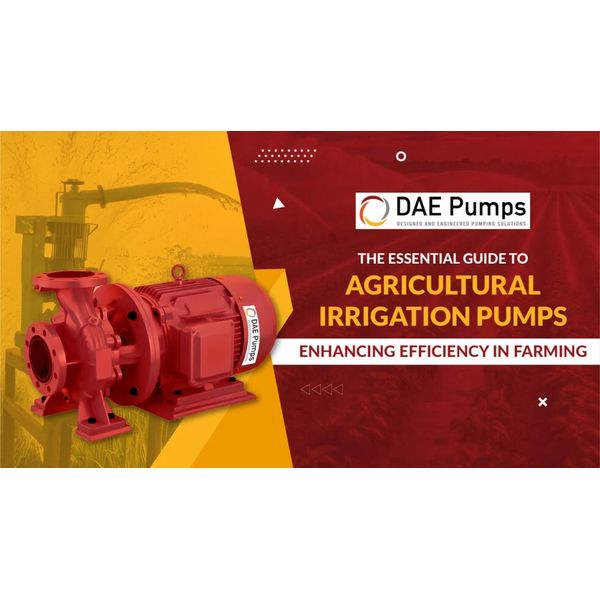
An agriculture irrigation pump is an indispensable tool for modern farmers, providing the necessary pressure and flow to distribute water evenly across fields. They help ensure that crops receive the right amount of water at the right time, which leads to improved crop yields, better water management, and more sustainable farming practices. As agricultural practices evolve to meet the demands of a growing population, the efficiency and reliability of agriculture water pumps, including the pumps used, have become more crucial than ever.
This guide will provide a comprehensive look at agriculture irrigation pumps, covering their types, features, and the key considerations for selecting the right pump. We’ll also explore how advancements in pump technology are helping farmers optimize water use and increase their efficiency while contributing to environmental sustainability. Whether you’re a small-scale farmer or managing a large commercial operation, this guide will equip you with the knowledge you need to make informed decisions when choosing an agriculture pump.
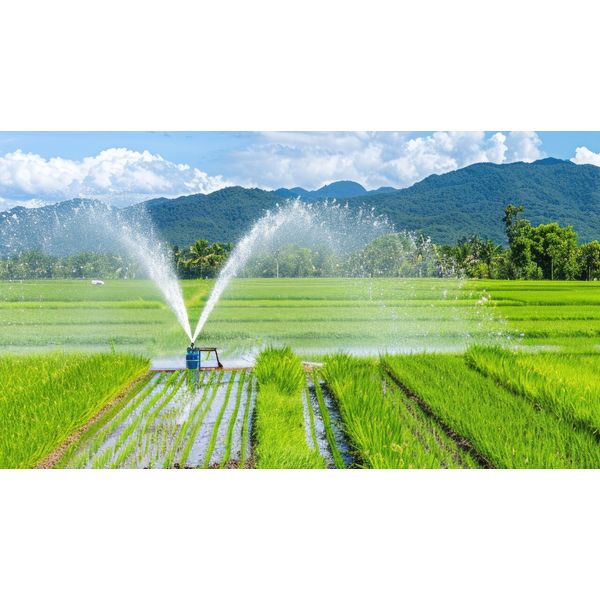
Definition and Function of Irrigation Pumps
An agriculture irrigation pump is a device designed to move water from a water source—such as a river, reservoir, lake, well, or pond—to agricultural fields. It provides the required pressure to ensure that water reaches all parts of the field, whether through sprinkler systems, drip systems, or surface irrigation. In essence, agriculture irrigation pumps are the heart of any irrigation system, and their performance directly impacts the health and productivity of crops.
The primary function of an agriculture irrigation pump is to lift or push water from the source to the irrigation network. The type of agriculture pump used and its performance capacity will depend on factors such as the distance from the water source, the size of the area to be irrigated, and the irrigation method employed. The more efficient and reliable the pump, the better it can deliver water evenly across the entire field.
Types of Irrigation Pumps Used in Agriculture
There are various types of agriculture irrigation pumps designed for different agricultural applications. The most commonly used agriculture pumps include surface pumps, submersible pumps, centrifugal pumps, and positive displacement pumps. Each of these agriculture water pumps works on different principles and is suited for specific irrigation methods and water sources.
Surface pumps, as the name suggests, are positioned on the surface and rely on suction to draw water from a nearby source. Submersible pumps, on the other hand, are placed directly into the water and push water upwards. Centrifugal pumps use the force generated by a spinning impeller to move water, while positive displacement pumps work by trapping and displacing a fixed volume of water. Each of these pumps has unique features and applications in farming, which we will explore further.
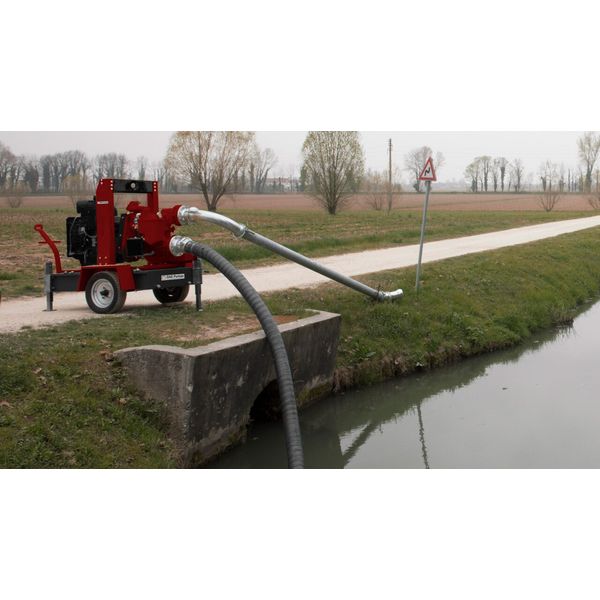
When selecting an agriculture irrigation pump, several key features determine its suitability for your specific needs. The most important factors to evaluate include the pump’s power source, flow rates, pressure capabilities, and material construction. By understanding these features, you can make a more informed decision and choose a pump that will offer reliable, long-term service.
Power Sources
Various energy sources exist, including electricity, diesel, solar power, and Agricultural irrigation pumps. The choice of power source depends on the location of your farm, the availability of energy, and the cost and environmental impact of using a particular power source.
- Electric Pumps are often used in areas with reliable access to electricity. Electric agriculture water pumps tend to be energy-efficient and require less maintenance than other power sources. They are also quieter and more environmentally friendly, especially if powered by renewable energy sources.
- Diesel Pumps: Diesel-powered agriculture pumps are typically used in remote or rural areas where electricity is unavailable. They are portable, powerful, and can handle high volumes of water, making them ideal for large-scale farms. However, they are more expensive to operate due to fuel costs and require more frequent maintenance.
- Solar Pumps: Solar-powered agriculture irrigation pumps are becoming increasingly popular in regions with abundant sunlight. These pumps offer a sustainable and low-cost solution for irrigation, especially in off-grid locations. The initial investment in solar agriculture pumps may be higher. Still, the long-term benefits, such as lower operating costs and reduced environmental impact, make them an attractive option for many farmers.
Flow rate refers to the volume of water an agriculture irrigation pump can deliver over a specified period, usually measured in gallons per minute (GPM) or liters per second (L/s). The flow rate you need depends on the size of your farm and the irrigation method being used. For example, a large farm with a sprinkler system will require a pump with a high flow rate to ensure water reaches all areas effectively.
Pressure, measured in pounds per square inch (PSI) or bars, is another critical specification. It refers to the force at which water is delivered through the irrigation system. The pressure requirements vary depending on the elevation of your field and the distance the water needs to travel. A pump with insufficient pressure may struggle to deliver water to the farthest corners of a field or uphill areas.
Agriculture water pumps are often exposed to harsh environmental conditions, including water, chemicals, dust, and extreme weather. Therefore, the materials used in the construction of the pump must be durable and resistant to corrosion and wear. Stainless steel, cast iron, and high-grade plastics are commonly used materials for pump components. Choosing a pump made from high-quality materials will ensure that it lasts longer and performs reliably under demanding conditions.
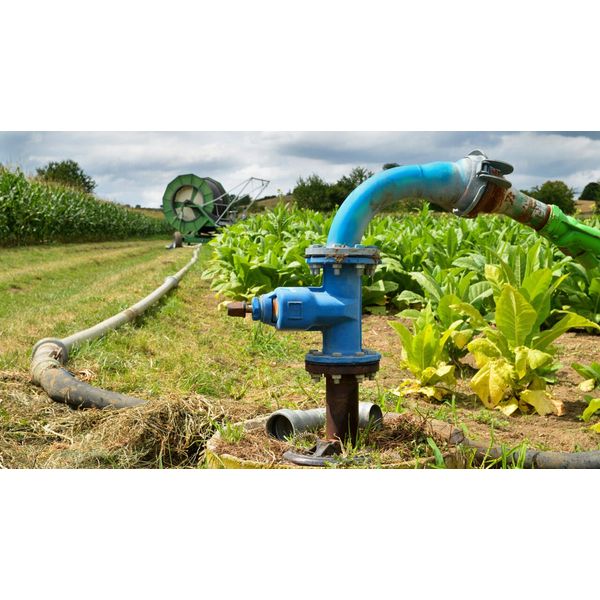
Now that we’ve covered the key features of agricultural irrigation pumps let’s take a closer look at the different types commonly used in farming and their applications.
Surface Pumps
Surface pumps are installed above the water source and use suction to draw water into the irrigation system. These agriculture water pumps are most effective when the water source is relatively shallow, making them suitable for irrigation systems that rely on ponds, lakes, or rivers.
- Applications and Advantages: Surface agriculture irrigation pumps are easy to install and maintain, and they can move large volumes of water over short distances. They are commonly used in flood irrigation systems where large amounts of water need to be delivered quickly. However, they are less effective when the water source is deep, as suction depth is limited.
Submersible Pumps
Submersible pumps are placed directly into the water source, such as a well, river, or lake. These agriculture irrigation pumps push water to the surface, making them ideal for drawing water from deep wells or underground sources.
- Features and Benefits: Submersible agriculture pumps are energy-efficient and deliver a consistent water flow, even from deep water sources. They are also quieter and more durable than surface pumps, as they are submerged in water, which helps keep them cool and reduces wear and tear.
Centrifugal Pumps
Centrifugal agriculture water pumps are one of the most widely used types of pumps in agricultural irrigation. They use a spinning impeller to move water, converting rotational energy into kinetic energy to push water through the irrigation system.
- How They Work in Irrigation Systems: Centrifugal agriculture pumps are used in pressurized irrigation systems, such as sprinkler and drip systems, where water needs to be distributed evenly across a field. These agriculture irrigation pumps are highly efficient for moving large volumes of water over long distances. However, they need to be primed before use, which can be a disadvantage in certain situations.
Positive Displacement Pumps
Positive displacement agriculture water pumps move water by trapping a fixed volume and then forcing it out of the pump. These pumps are ideal for applications that require precise water delivery, such as drip irrigation systems.
- Unique Applications in Agriculture: Positive displacement agriculture pumps are often used for fertigation (injecting fertilizers into the irrigation system) and chemigation (injecting chemicals like pesticides). These pumps ensure that the correct amount of water, nutrients, and chemicals are delivered directly to the plants.
A spray pump plays a crucial role in crop protection and fertilization by delivering pesticides, herbicides, and fertilizers directly to crops. These pumps are designed to spray liquids evenly across the field, ensuring that crops receive the necessary treatments to thrive.
Definition and Use of Spray Pumps
A spray pump is a specialized type of agricultural irrigation pump designed to spray liquids onto crops. These spray pumps are used in various applications, from applying pesticides and herbicides to distributing liquid fertilizers.
Importance of Spray Pumps in Crop Protection and Fertilization
A spray pump in agriculture helps farmers protect their crops from pests, weeds, and diseases by ensuring an even and precise application of chemicals. By using spray pumps, farmers can reduce the amount of chemicals needed, minimizing environmental impact while ensuring the health and productivity of their crops.
Backpack Spray Pumps:
These small, portable spray pumps in agriculture are ideal for smaller farms or targeted applications, such as treating specific areas of a field or individual plants. They are manually operated and offer great control over the spraying process.
Tractor-Mounted Spray Pumps:
For larger fields, tractor-mounted spray pumps in agriculture provide an efficient way to cover large areas quickly. These pumps are attached to tractors and are typically used for spraying herbicides, pesticides, or fertilizers over row crops.
When choosing an agriculture pump, it’s essential to consider your farm’s specific needs, including crop type, field size, and water source. Making the right choice can significantly impact your irrigation system’s efficiency and the health of your crops.
Factors to ConsiderCrop Type:
Different crops require different water requirements. For example, rice fields require more water than vineyards. Knowing your crops’ specific water needs will help you determine the appropriate agriculture irrigation pump.
Field Size:
Larger fields require agriculture water pumps with higher flow rates to ensure that water is distributed evenly and reaches all parts of the field.
Water Source:
The depth and distance of your water source will influence the type of agricultural irrigation pump you need. For shallow water sources, a surface pump may suffice, while deeper sources will require a submersible pump.
Calculating the Required Pump Capacity and Head
To determine the right agriculture irrigation pump for your farm, you need to calculate the required flow rate (capacity) and head (pressure). The flow rate refers to how much water your agriculture water pump can move, and the head relates to how much pressure it can generate to push water through the system.
Installing and maintaining agriculture irrigation pumps correctly is essential for ensuring their efficiency and longevity.
Best Practices for Pump Installation
Proper installation is critical for ensuring that your agriculture irrigation pump operates efficiently. Here are some tips for installing your pump:
- Ensure that the agriculture irrigation pump is installed on a stable, level surface to prevent vibrations and mechanical damage.
- Use appropriate fittings and piping to avoid leaks and pressure losses.
- Follow the manufacturer’s instructions for priming and starting the agriculture pump.
Regular Maintenance Routines
Routine maintenance is key to extending the life of your agriculture irrigation pump. This includes:
- Regularly cleaning filters and screens to prevent blockages.
- Inspecting seals, gaskets, and valves for wear and tear.
- Lubricating moving parts to avoid friction and to reduce mechanical wear.
Troubleshooting Common Issues
Low pressure, cavitation, and overheating are common issues with agricultural irrigation pumps. Regular maintenance can help prevent these issues, but knowing how to troubleshoot them is also important.
Technological advancements have revolutionized irrigation systems, making agriculture irrigation pumps more efficient and reducing water and energy waste.
Innovations in Irrigation Pump Technology
Smart Pumps:
Smart agriculture irrigation pumps equipped with sensors allow farmers to monitor water flow, pressure, and pump performance in real-time. These pumps can be connected to mobile apps or computer systems for easy monitoring and adjustment.
IoT Integration:
The Internet of Things (IoT) has made it possible to automate agriculture irrigation pumps. Farmers can remotely control their agriculture water pumps, schedule irrigation cycles, and receive alerts if there are issues, such as low water levels or pump malfunctions.
Case Studies Showcasing Advanced Pumping Solutions
Many large agricultural operations have successfully adopted smart agriculture irrigation pumps to reduce water usage and improve crop yields. For example, precision irrigation systems in California’s almond orchards have resulted in significant water savings and higher crop production.
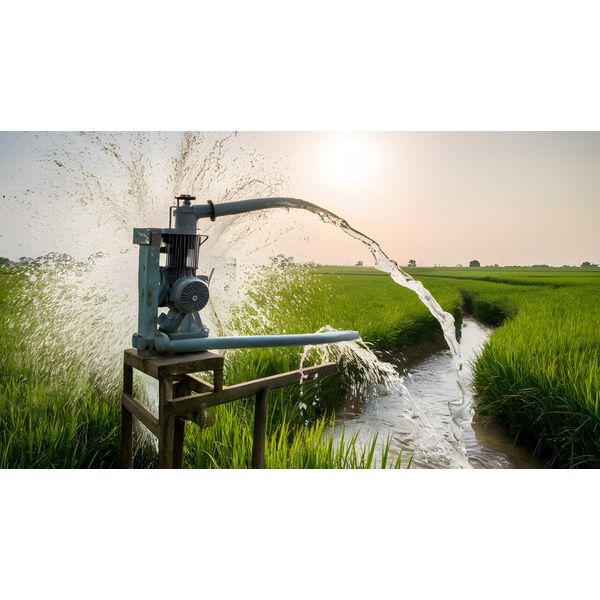
Sustainable irrigation practices are essential to conserving water resources and protecting the environment. By choosing the right agriculture irrigation pump and system, farmers can reduce water waste and contribute to more sustainable agriculture.
Sustainable Practices in Irrigation
Some sustainable practices include using drip irrigation systems, rainwater harvesting, and solar-powered agriculture water pumps. These methods reduce water consumption and the carbon footprint of farming operations.
The Role of Efficient Water Pumps in Conserving Water Resources
Efficient agriculture irrigation pumps help reduce water waste by ensuring that water is delivered precisely where it is needed. By using less water more effectively, farmers can conserve valuable water resources and reduce their operational costs.
Agriculture irrigation pumps are a critical component of modern farming, playing an essential role in delivering water to crops efficiently and effectively. Selecting the right agriculture water pump for your farm can make a significant difference in crop health, water usage, and overall farm productivity. By understanding the various types of agriculture pumps, their features, and how to maintain them, farmers can make informed decisions that will lead to long-term success.
As technology continues to advance, farmers have access to more efficient and environmentally friendly agriculture irrigation pumps. Whether you are using traditional surface pumps or investing in cutting-edge smart pump technology, choosing the right agriculture pump is key to enhancing your farming operation’s sustainability and profitability.
Now is the time to evaluate your irrigation system and ensure that you have the best agriculture irrigation pump for your farm’s needs. With the right equipment and knowledge, you can improve water management, reduce costs, and contribute to a more sustainable agricultural future.
